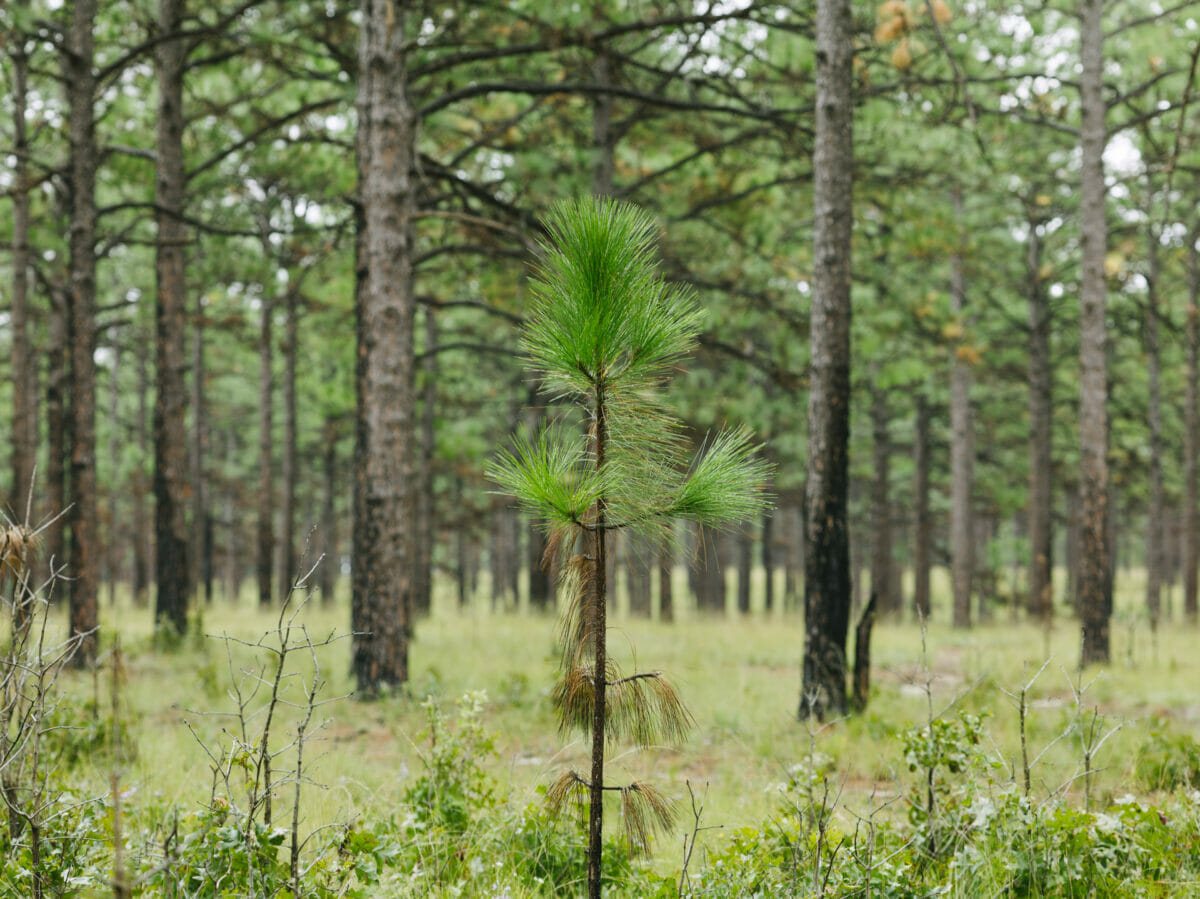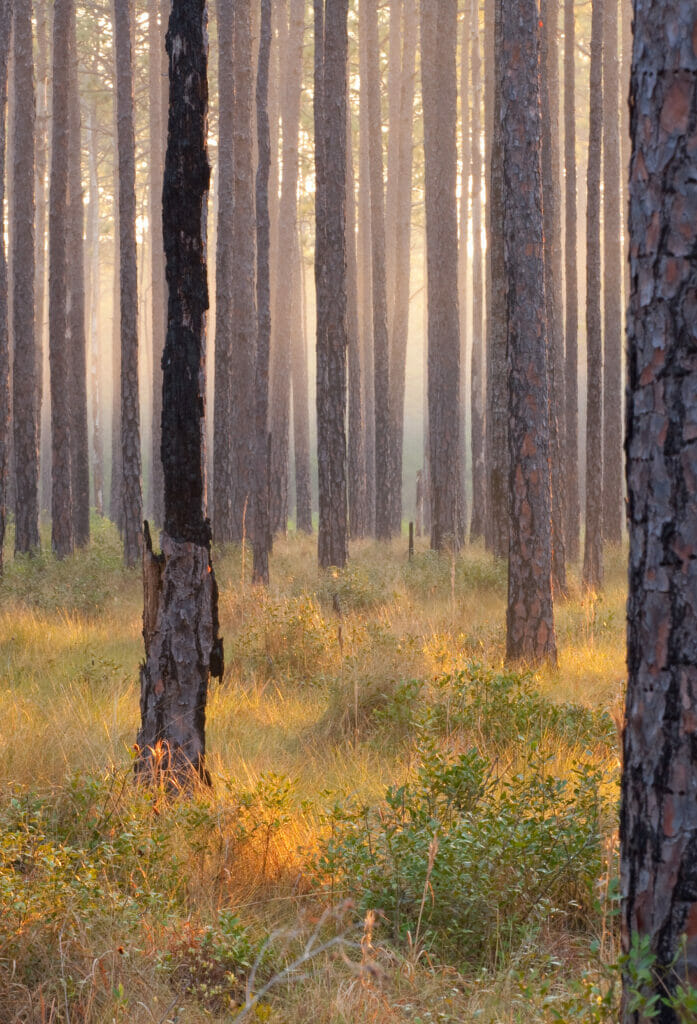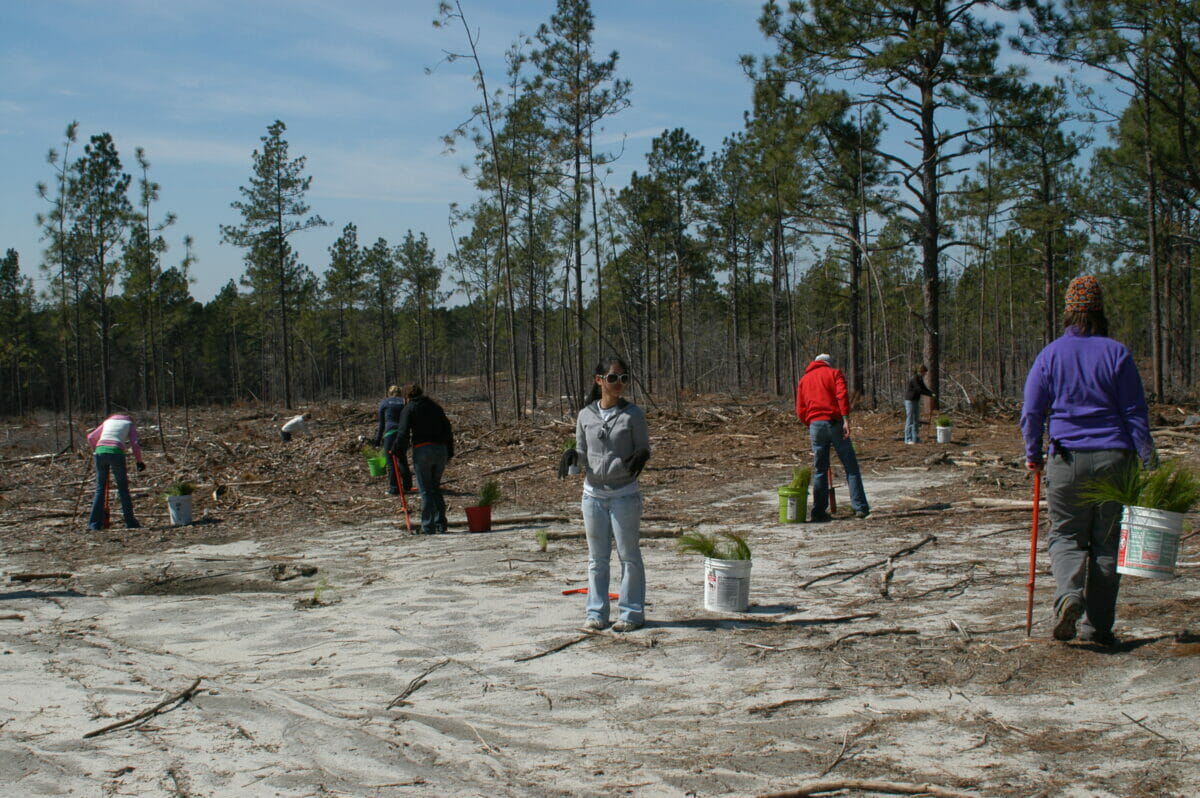How the National Seed Laboratory supports nurseries and land restoration projects across the country.

A century ago, longleaf pine forests dominated the Southeast, home to diverse wildlife and recreational opportunities. But over the past several decades, this ecosystem has seen a decline to just five percent of its original acreage, mainly due to fire suppression practices and conversion to other land uses.
Enter America’s Longleaf Restoration Initiative (ALRI), a project involving a slew of private, nonprofit and governmental partners that have worked diligently to restore longleaf pine populations over the last decade, including planting 1.7 million acres of trees.
“Anywhere from 350 to 700 trees per acre are planted depending on the land objective,” says Colette DeGarady of the Nature Conservancy, a global environmental organization and one of ALRI’s many partners. This means somewhere between 595 million and 1.19 billion longleaf pine seeds have been planted.
[RELATED: The Great American Chestnut Tree Revival]
Experts have noticed that restoration projects such as the longleaf pine initiative are on the rise across the country. “People are increasingly recognizing all of the benefits that trees provide, including removing carbon from the atmosphere, which helps slow climate change, and this has led to an increase in interest in reforestation,” says Joe Fargione, science director for the Nature Conservancy’s North America region. “In addition, there is an increasing need for restoration and reforestation, for example, due to the increasing size and severity of wildfires in the Western US, which otherwise might not grow back.”
Securing the Right Seeds
Before these restored habitats can take root, they need the right seeds. There’s a lot riding on the success of those little seeds, and native plants (indigenous species that evolve naturally in an ecosystem) such as the longleaf pine don’t usually come from a package with growing instructions printed on the label. The nurseries and restoration organizations that specialize in native plant seeds—collecting them, growing them out in greenhouses and then planting them back in the wild—rely on labs such as the National Seed Laboratory to support their work. These labs provide critical testing to determine the viability of the seeds and give growers other important information, such as how many seeds should be planted per container, in what conditions they can be stored and the hardiness of each batch of seeds collected.
The National Seed Laboratory, a division of the USDA that is overseen by the US Forest Service, contributes to the longleaf pine restoration project by testing the seeds of longleaf pine and other native plant species found in their ecosystem’s understory for nurseries and seed companies that sell plant stock to private landowners, another group of important AlRI stakeholders working to restore those ecosystems on their land.

Photo by Andrew Kornylak.
Since its inception in the 1950s in Brooklyn, Mississippi, where it initially provided bare-bones testing out of an office for US Forest Service nurseries, the lab has worked with hundreds of clients throughout the US. It has helped restore a wide variety of ecosystems that include species such as the towering Douglas firs of the West and roughly 250 different non-woody native plant species, such as the humble milkweed.
By the 1960s, the National Seed Laboratory moved just outside of Macon, Georgia into a full-scale lab providing services across the southeast. In the 1980s, it expanded nationally but kept its focus on trees, then later added grasses and wildflowers.
Today, the lab provides its testing mostly to federal land management agencies such as the Bureau of Land Management, National Park Service and Forest Service, but it also services state forestry and water management agencies, some public and commercial seed companies and nonprofits involved in restoration.

Photo courtesy of the Nature Conservancy/Debbie Crane.
These organizations do the collecting and processing of the seeds—sorting out empty, small or immature seeds—then send a sample (anywhere from a couple hundred to a couple thousand) to the lab for testing, says Victor Vankus, director of the National Seed Laboratory. The seed sample gets analyzed for a variety of factors, including moisture content, physical purity, seeds per pound and germination, which help to determine their viability for planting and optimal growing conditions for healthy seedlings, which in turn helps with management costs.
“If your germination [rate] is only 65 to 70 percent, you can’t really put just one seed per container,” says Vankus, who has worked for the National Seed Laboratory for 33 years. “You’d have too many empties on the table. If a nursery is ordering 30,000 seedlings of some particular species, there’s a pretty good chance you’ll need to plant more than 30,000 seeds. That’s the kind of thing the nurseries use our numbers to help them with.”
Playing the Long Game
Another important project with which the lab is involved, in collaboration with the USDA Agricultural Research Service and the National Center for Genetic Resources Preservation (NCGRP), is the long-term storage of native plant seeds for genetic conservation. After the lab obtains the seeds for testing, it sends some to the NCGRP for storage in disaster-proof freezer vaults so they can then be used for future restoration of plant populations in the event the plants are lost completely in the wild. These seeds are cataloged in a database of more than 10,000 plant species, most of which are agronomic crops.
The lab also offers workshops for clients to help them better understand the seed testing process and its results, provides technical training for seed analysts at other labs and conducts studies and collaborative research in areas such as standardized testing rules and optimal storage conditions for native species where this information doesn’t yet exist.
[RELATED: Indigenous Plant Nurseries Look to Revive Landscapes and Cultures]
Currently, the lab is working to develop testing protocols for species such as milkweed, important for the monarch butterfly’s survival. Some species have evolved to produce seeds that only germinate under a certain set of conditions in the field. “So, when it comes into the laboratory, we might have an idea of what will work well, but it hasn’t really been tested,” says Vankus. The National Seed Laboratory then works with other labs to compare methods and replicate findings to develop testing procedures.
In the past, harvested seeds were generally planted in the same year, but with the increased demand for restoration projects across the country, knowing how to handle and store seeds becomes critical. Take sagebrush, for example, which is used in habitat restoration projects throughout the West. Those seeds have traditionally been stored in warehouses that aren’t necessarily climate controlled and in bags that aren’t always moisture proof. Sagebrush was commonly thought of as a seed that doesn’t store well, but when the lab analyzed best storage practices, it discovered that if the seeds were dried and packaged to regulate the amount of moisture inside them and then frozen, they could last for at least 10 years, which is as long as the study has been going on.
What sets the National Seed Laboratory apart is its ability to provide technical assistance to nurseries and their engagement in research studies, but Vankus emphasizes that the lab is one of many such labs. Just as the plants within the complex ecosystems that comprise our nation’s forests and grasslands depend on one another for survival, it takes all of these organizations and labs working in concert to restore them.